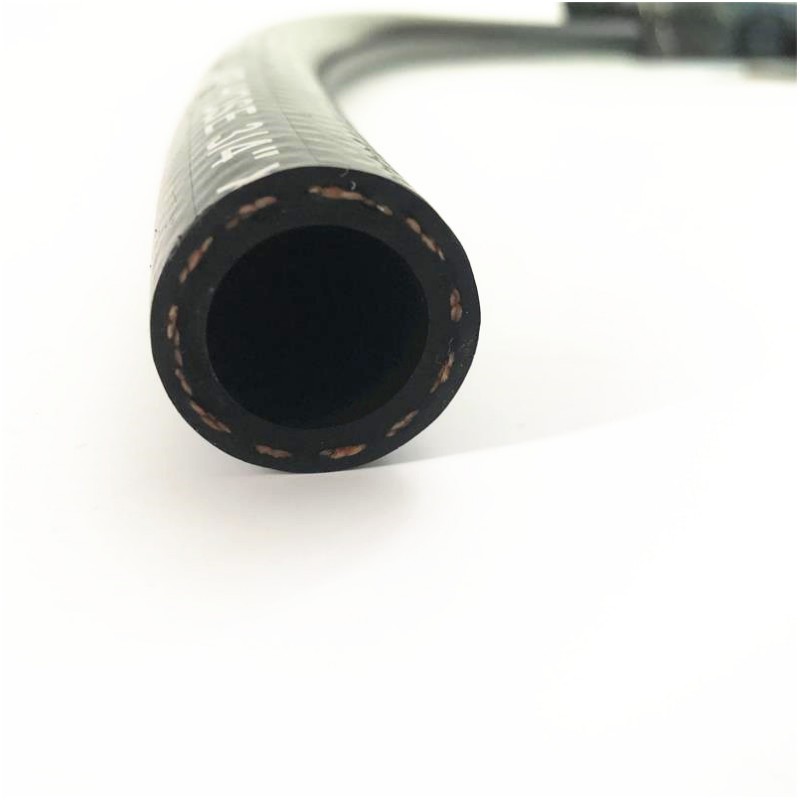Working hydraulics are necessary for proper vehicle operation and safety. A hydraulic hose is tasked with handling liquid pressure and flow, and if a hose failure occurs, it can affect connected components and endanger the driver. Knowing how to determine if your vehicle needs a hydraulic hose repair or replacement is essential to good car maintenance.
WHAT DO HYDRAULIC HOSE SYSTEMS DO?
Passenger vehicle brakes, steering and transmission all use hydraulic hose systems. Other systems that move fluid (such as engine cooling, A/C and heating, fuel, and others) also require automotive hoses, but hydraulic hoses have to withstand high amounts of pressure and allow the fluid to flow at a specified rate so that it reaches its destination. Hydraulic hoses are composed of strength-lending braided steel enclosed in rubber housing to prevent leaking. Unfortunately, this rubber is subject to deterioration and corrosion. In the heavy equipment world it is the hydraulic systems that allow massive machines to perform Herculean tasks. They move hydraulic cylinders for digging and turn hydraulic motors for tracks.

SAFETY FIRST
When checking high pressure hydraulic hoses like those used on machinery there is a very real danger from high pressure hydraulic fluid. Inspect hydraulic hoses with the machine turned off to reduce the pressure in the hydraulic system. If possible relieve any residual hydraulic pressure before inspection. You should wear safety glasses or a face shield when inspecting hydraulic hoses. Use your eyes for the inspection as much as possible. A hydraulic hose can hold well over 2,000 psi which can go through even the toughest safety gloves. If you need to touch or move a hydraulic line, use something like a broom handle instead of your hand. Never touch a hydraulic hose while the machine is running and never attempt a hydraulic line repair on a pressurized machine. Many people underestimate the power of hydraulic fluid under pressure due to its easy flowing nature, but remember the same forces that move mountains runs through those small hoses.
HOSE CHECKS

It’s important to check your hoses for signs of aging, heat exposure and sun exposure to prevent it from hardening and cracking. UV light can damage hydraulic hoses over time. You should also look for kinks or excessive twists in the line, which can limit flow and lead to pressure buildup. Flat areas in the line indicate bad routing and could mean that the hose has been pinched or is pulling a vacuum.
Check to make sure the hose is not rubbing against a sharp object and that no parts of it are worn or deeply cut. There should be no burns, bubbles or blisters. The hose should be the same diameter through its entire length with no swelling or bulges. You should not be able to see any of the reinforcement layer (mesh, wiring, plastic, etc.) underneath the outer sheathing. If the hose has protective covers check them for damage as well.
You should also inspect for leaks, especially at connections, which are common points of failure. The hose should be dry with no signs of hydraulic fluid on the outside. It is okay if the hose is wet from water or mud, just keep an eye out for the rainbow sheen of oil. Any of these signs mean it is time for hydraulic hose replacement.
REPAIR OR REPLACE?
Deciding whether to repair or replace a hose relies on a simple rule: When in doubt, replace it. Any damage to the length of a hose compromises the integrity of its walls and can prevent it from holding fluid under a specified pressure, so you’ll need to replace it. Often, damage and leaks occur at the end of the hose or at a point of connection. Sometimes, you can simply tighten a fitting, but in other cases you may need to replace an O-ring. There are also times when the fitting breaks but enough of the hose length remains. If this occurs, you’ll just need to remove the fitting and install a new one.
However, in many cases, such as with brake flex lines, the hose should be replaced. Luckily brake flex lines are fairly straightforward to replace. While you may find things a hydraulic hose repair kit for sale, it is best to just replace the hose when it is damaged. Smart preventative measures can also be taken, such as installing hose protectors at the first sign of minor wear. Never open or attempt to repair a hose that’s under pressure, and always wear appropriate eye and hand protection while you work.



